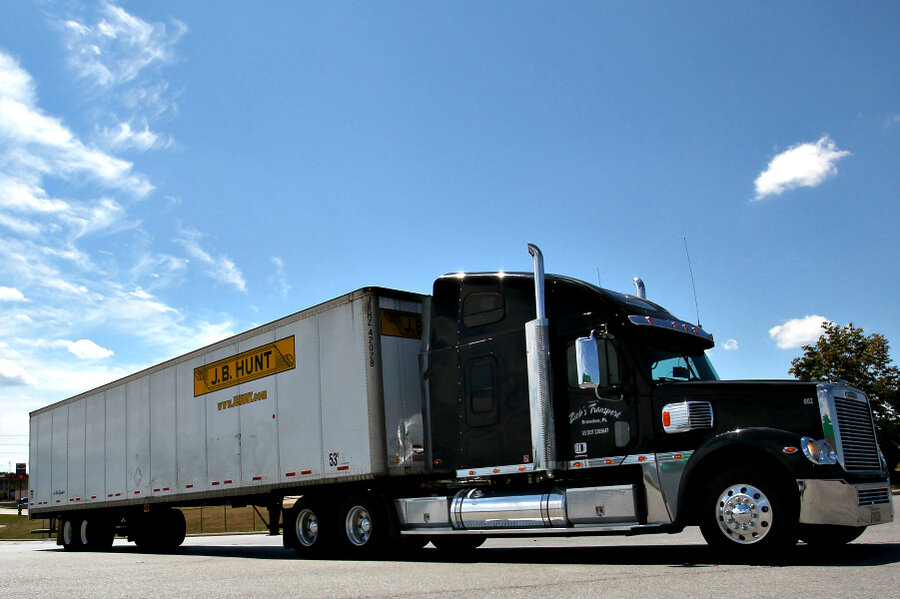Truckers join a drive on US highways to tackle sex trafficking
Loading...
| London
Truck driver Kevin Kimmel just finished making his overnight deliveries when he noticed something odd at the Virginia truck stop where he stopped to sleep.
A man knocked on the door of a battered recreational vehicle, went inside, and the whole vehicle started rocking.
A few minutes later, what seemed to be the face of a distraught girl appeared at the vehicle's window but was quickly jerked away, leaving him weighing what to do.
"The movement and that girl's face, I thought 'I don't think it's a family vacation'," said the Florida-based trucker.
His call to the local sheriff last January proved his suspicions true. Inside the RV was a young woman held captive for 18 days by a couple making her perform sex acts for money.
Kimmel's story testifies to the power and reach of Truckers Against Trafficking (TAT), a nationwide U.S. organization that has trained some 170,000 drivers and truck stop workers to look out for possible instances of sex trafficking.
"When you think about all of the strategic places that these guys are in, it's not just truck stops, it's rest areas, it's hotels and motels, it's gas stations, it's busy city streets, loading docks," said Kendis Paris, executive director and co-founder of the group known as TAT.
"They're trained to be vigilant and observant in the course of their everyday jobs. When you factor all that in, it really is a smart audience to educate and work with."
TAT training highlights how to recognize potential red flags, whether it's an unaccompanied minor looking fearful or certain buzzwords on Citizens Band radio chatter, and how to contact the National Human Trafficking Resource Center.
Truckers have made hundreds of calls to the Resource Center, according to Polaris, which operates the center, leading to more than 350 likely cases and identifying about 650 victims.
Paris, a speaker Nov. 18 at the Trust Women conference on women's rights and trafficking run by the Thomson Reuters Foundation in London, set up the nonprofit group in 2011.
It grew from a bid by her family's ministry to find a way to fight human exploitation, and the focus on trucking was her mother's idea, Paris said. Her family had no link to trucking.
The Colorado-based group reaches drivers through national and state trucking associations, driving schools, industry shows, and large companies that wield their own private fleets.
Next year Ohio is poised to become the first U.S. state to mandate that drivers getting commercial driving licenses undergo TAT training to spot potential trafficking victims, she said.
"When you realize that the average age is 13, that kind of sickens you," said Captain Mike Crispen of the Ohio State Highway Patrol who is helping implement the training.
"And that's an average. It's not the bottom number. When people start finding out about that, they get more involved."
Globally, an estimated 21 million people are victims of human trafficking, according to the United Nation's International Labour Organization. Some 1.5 million victims are in North America, according to the Trafficking Resource Center.
The case uncovered by Kimmel led to the prosecution of a Aldair Hodza, 36, and Laura Sorensen, 31, who, according to court documents, tortured their victim by burning her, hammering nails into her feet and pouring bleach into her wounds.
The pair pleaded guilty to federal sex trafficking charges and were each sentenced in August to at least 40 years in prison by a judge who noted the case's "rare level of depravity."
Kimmel, 58, admits the case of the woman he rescued hit him hard and he now helps spread the word about TAT whenever he can.
"It's all about educating people and especially people in that industry, being that there's a little more than 3 million of us on the road every day," he said. "It's a great opportunity with a lot of eyes."
• Reporting by Ellen Wulfhorst, editing by Belinda Goldsmith. This article originally appeared on the website of the Thomson Reuters Foundation, the charitable arm of Thomson Reuters that covers humanitarian news, women's rights, trafficking, corruption, and climate change. Visit www.trust.org.





